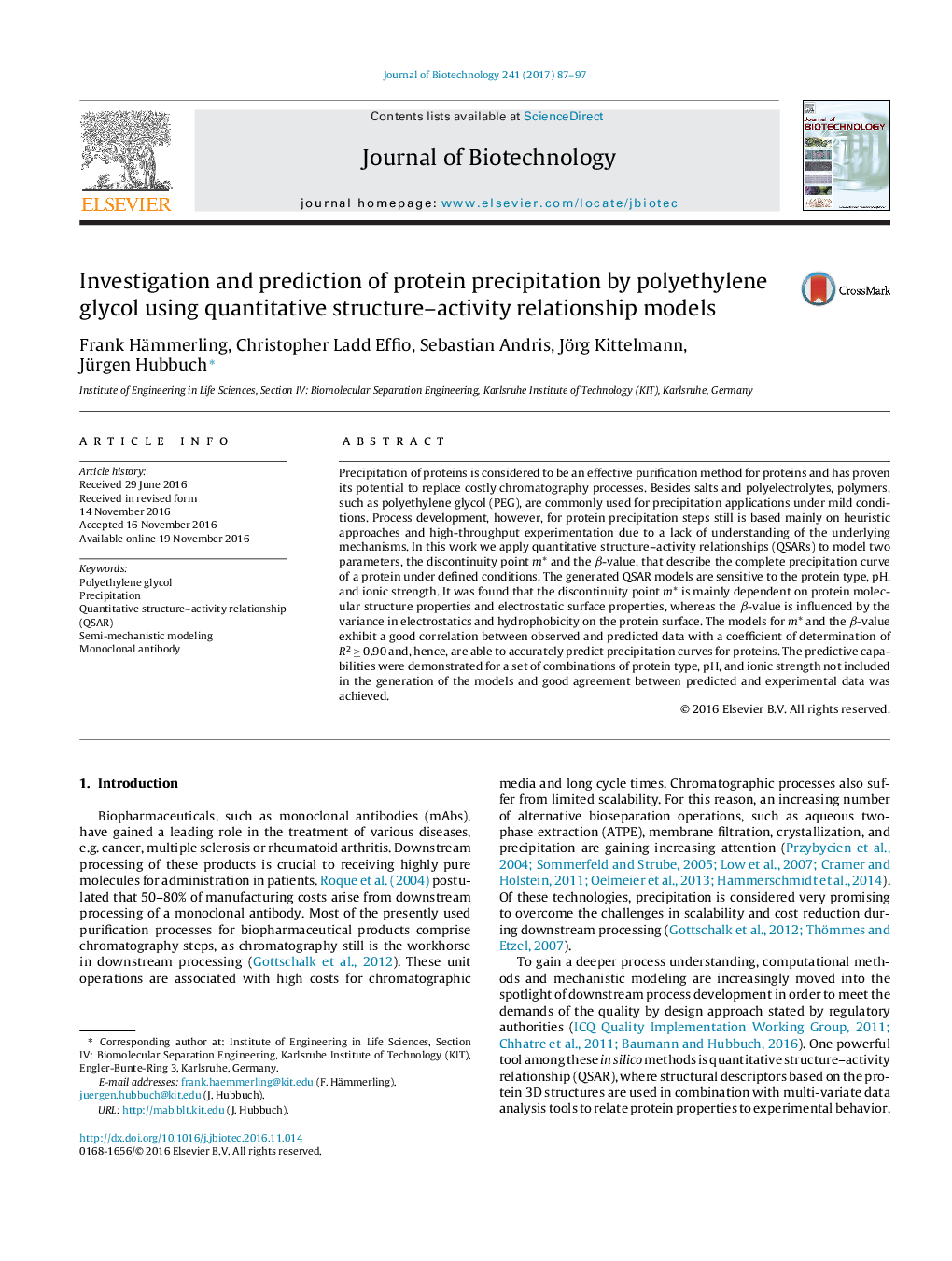| کد مقاله | کد نشریه | سال انتشار | مقاله انگلیسی | نسخه تمام متن |
|---|---|---|---|---|
| 6452186 | 1417003 | 2017 | 11 صفحه PDF | دانلود رایگان |
- A QSAR approach to predict protein precipitation by polyethylene glycol is presented.
- The generated QSAR models allow the prediction of precipitation curves for new proteins.
- Valuable insights about the properties influencing the precipitation behavior were gained.
- The methodology forwards computer-aided process design and process understanding following the tenet of QbD.
Precipitation of proteins is considered to be an effective purification method for proteins and has proven its potential to replace costly chromatography processes. Besides salts and polyelectrolytes, polymers, such as polyethylene glycol (PEG), are commonly used for precipitation applications under mild conditions. Process development, however, for protein precipitation steps still is based mainly on heuristic approaches and high-throughput experimentation due to a lack of understanding of the underlying mechanisms. In this work we apply quantitative structure-activity relationships (QSARs) to model two parameters, the discontinuity point m* and the β-value, that describe the complete precipitation curve of a protein under defined conditions. The generated QSAR models are sensitive to the protein type, pH, and ionic strength. It was found that the discontinuity point m* is mainly dependent on protein molecular structure properties and electrostatic surface properties, whereas the β-value is influenced by the variance in electrostatics and hydrophobicity on the protein surface. The models for m* and the β-value exhibit a good correlation between observed and predicted data with a coefficient of determination of R2 â¥Â 0.90 and, hence, are able to accurately predict precipitation curves for proteins. The predictive capabilities were demonstrated for a set of combinations of protein type, pH, and ionic strength not included in the generation of the models and good agreement between predicted and experimental data was achieved.
Journal: Journal of Biotechnology - Volume 241, 10 January 2017, Pages 87-97
